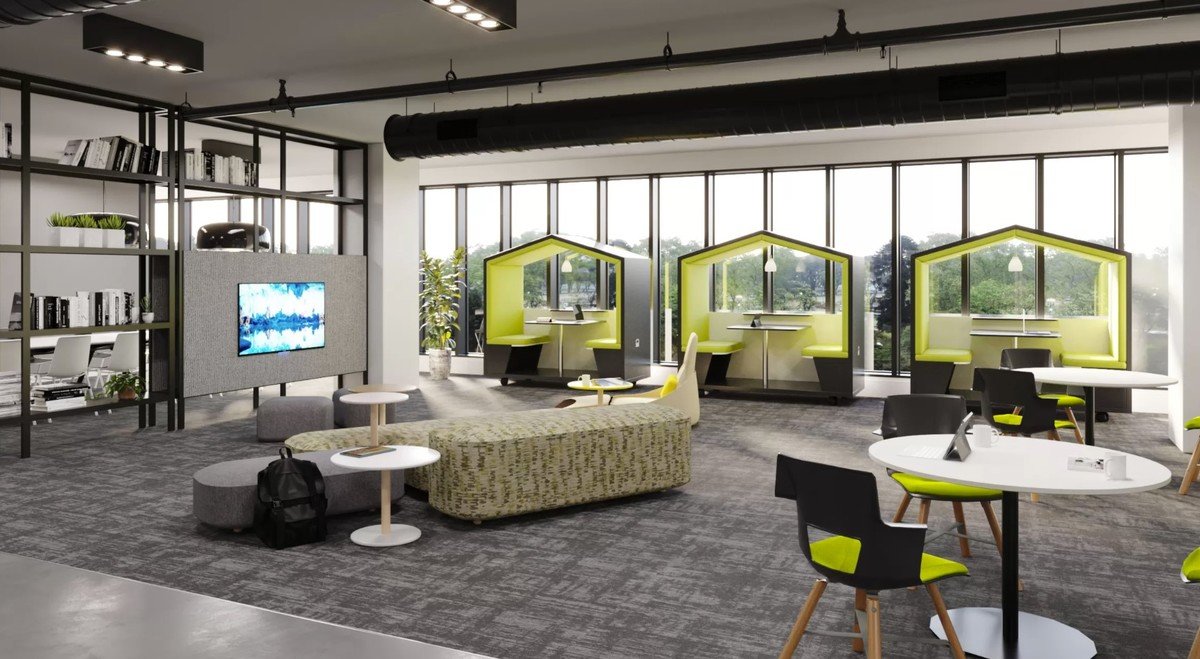Anomalous Material
Content based on Extensive ResearchCollaborative Spaces – Designing Offices for Teamwork and Creativity
Friday , 24, November 2023 Business Comments Off on Collaborative Spaces – Designing Offices for Teamwork and Creativity
In the dynamic landscape of modern workplaces, the design of workplaces has evolved to reflect a shift in emphasis from individual workstations to fostering collaboration and creativity. The concept of collaborative spaces has emerged as a key element in office design, reshaping the way teams interact and innovate. In this article, we explore the significance of designing offices with a focus on collaborative spaces and how it enhances teamwork and creativity among employees.
Open Floor Plans and Breakout Areas
Workspaces focused on collaboration often manifest through open floor plans and strategically placed breakout areas within the office. These layouts encourage spontaneous interactions and idea exchanges among team members. An open office space design break down physical barriers, promoting a sense of inclusivity and accessibility that fuels collaboration efforts.
Flexible Furniture Configurations
One of the most essential requirements for this type of work environment layout is the integration of flexible furniture configurations. Moveable desks, modular seating, office phone booths, and adaptable workstations empower employees to rearrange their environment based on the needs of the task at hand. This flexibility not only supports different work styles but also stimulates a sense of autonomy and ownership over the workspace.
Tech-Enabled Collaboration
Incorporating technology into collaborative spaces has become essential in the digital age. Interactive displays, video conferencing capabilities, and shared digital platforms foster seamless collaboration among team members, whether they are physically present in the office or working remotely. Technology acts as a bridge, connecting individuals and ideas across distances.
Promoting Serendipitous Encounters
Serendipity often plays a significant role in innovation. Collaborative spaces are strategically designed to promote serendipitous encounters by placing communal areas such as coffee stations, lounges, or shared workspaces in high-traffic zones. These areas act as catalysts for chance interactions, leading to impromptu discussions and the cross-pollination of ideas.
Diverse Work Environments
Effective collaborative space design recognizes the diverse needs of employees and provides a variety of work environments within the office. From quiet corners for focused work to vibrant meeting areas for brainstorming sessions, a nicely laid out work enviornment accommodates different types of work and nurtures a dynamic work culture.
Cultural Impact on Collaboration
The design of this type of workstations is intricately linked to an organization’s culture. A company’s values and ethos are reflected in the layout and aesthetics of shared spaces. For example, a company emphasizing transparency and accessibility might opt for glass-walled meeting rooms, while a creative agency may incorporate vibrant and eclectic design elements to inspire out-of-the-box thinking.
Enhancing Employee Well-being
Areas designed for teamwork contribute to employee well-being by breaking the monotony of traditional office layouts. The inclusion of natural light, comfortable seating, and biophilic design elements creates an inviting atmosphere. Employees feel more engaged and motivated when they have access to aesthetically pleasing and comfortable work spaces.
Measuring the Impact
The success of collaborative spaces can be measured through increased team engagement, higher levels of innovation, and improved problem-solving capabilities. Organizations can gather feedback from employees to assess the effectiveness of teamwork-focused areas and make data-driven adjustments to continually optimize the work environment.
Conclusion
Designing offices with a focus on collaborative spaces is a strategic investment in fostering teamwork and creativity. The intentional layout, flexible configurations, and tech-enabled features create an environment where employees can seamlessly collaborate, share ideas, and contribute to a culture of innovation. As businesses recognize the intrinsic link between workspace design and organizational success, the evolution towards collaborative spaces continues to redefine the modern workplace, creating environments where the synergy of teamwork and creativity propels companies forward.